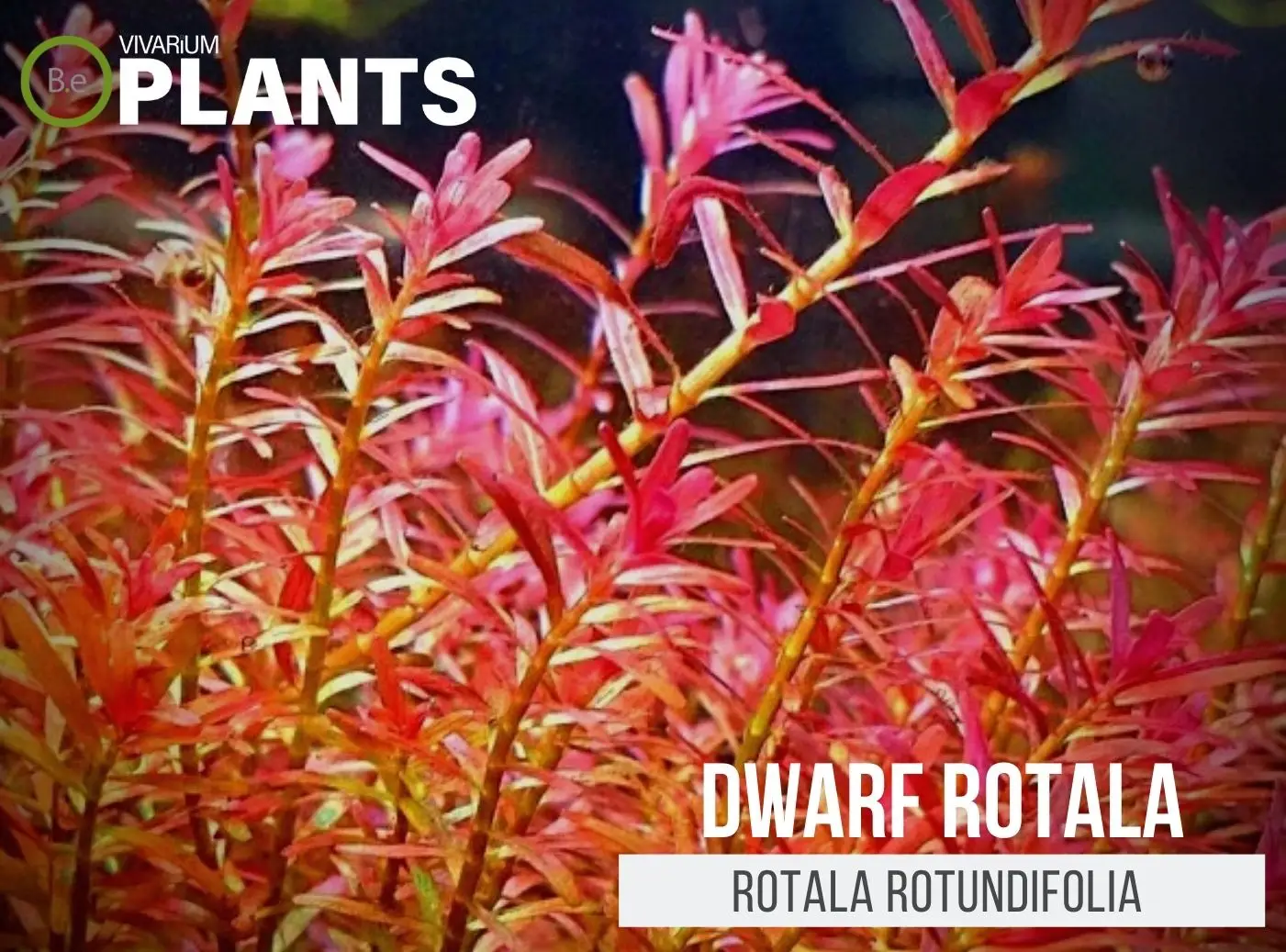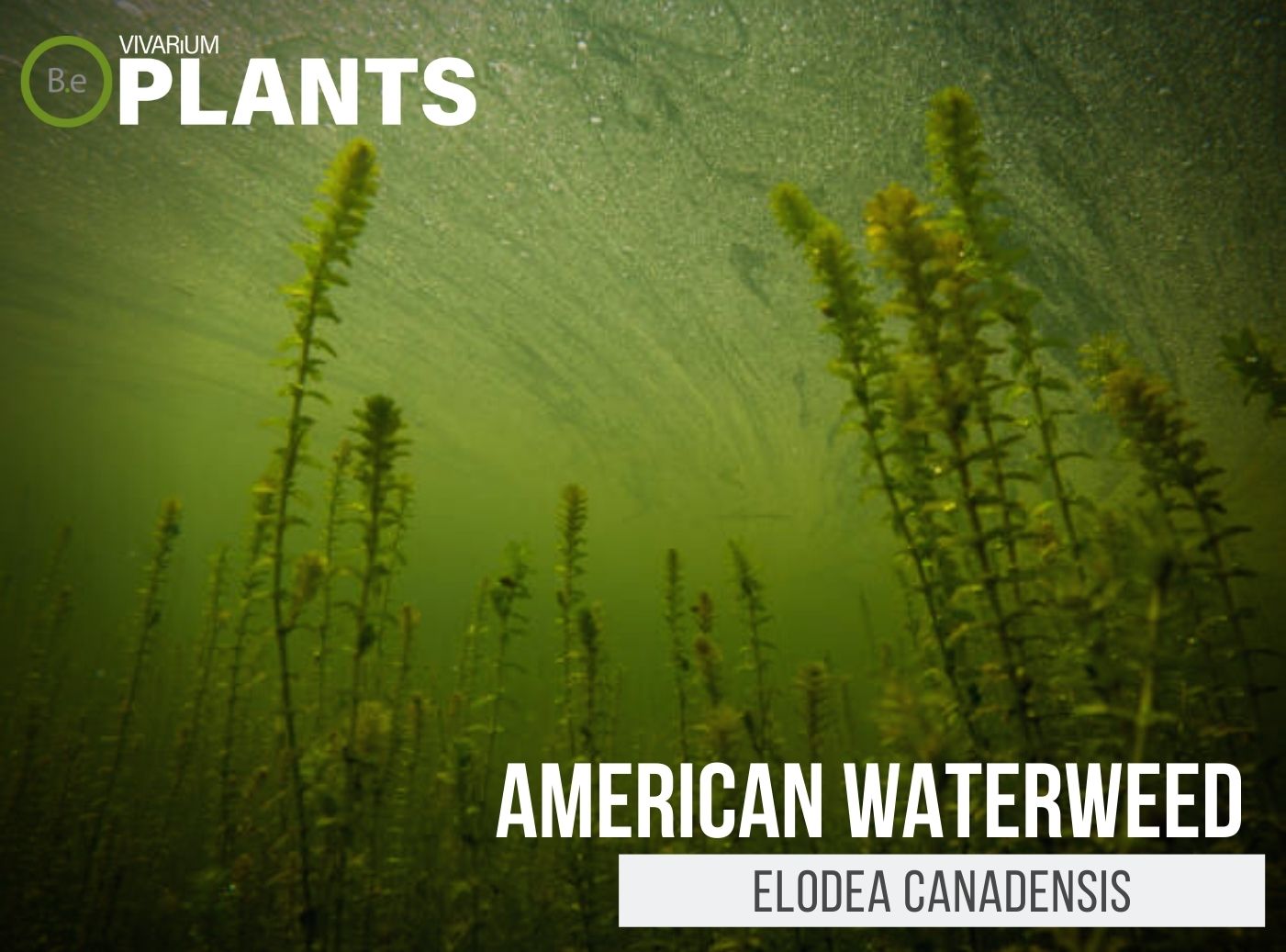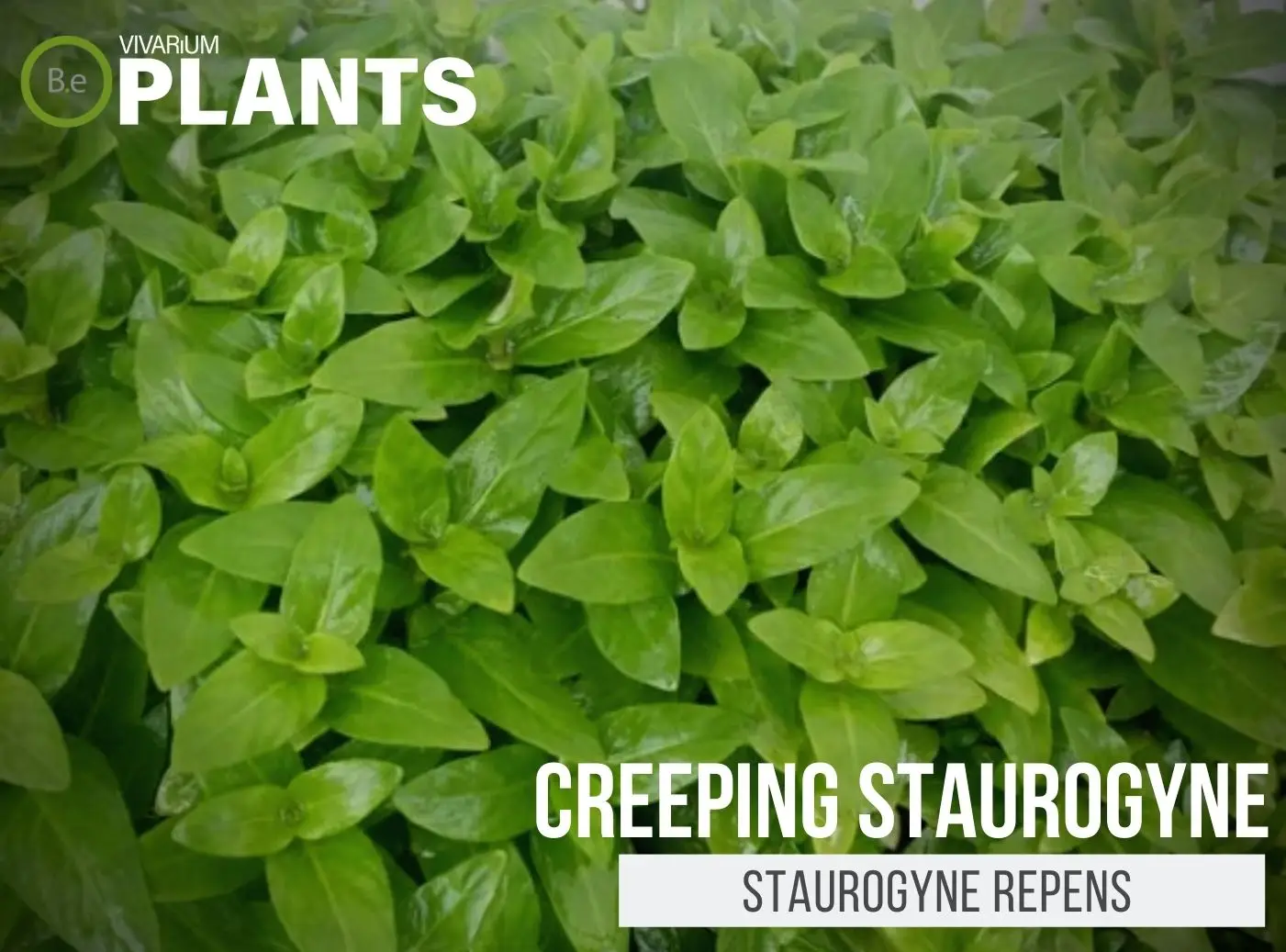Are you looking to create a beautiful, vibrant aquarium with a variety of colorful aquatic foliage?
Paludarium plants, riparium plants as well as aquarium plants all play an integral role in any freshwater aquatic setup.
They offer a range of benefits such as helping to oxygenate the water, reducing algae growth, and providing hiding places for aquatic animals.
In this article, we will explore the best types of aquatic plants for aquariums as well as other types of aquatic vivariums.
We will also go over how to choose the right varieties for your tank, and tips for proper care and maintenance.
Table Of Contents:
ToggleWhat Are Aquatic Plants?
Aquatic plants are plants that grow in water or wet soil, such as marshes and bogs.
They are usually adapted to life in an aquatic environment and can do quite well fully submerged or partially emerged.


Benefits Of Aquatic Plants For Aquariums
Aquatic plants are an essential part of healthy and balanced aquatic ecosystems.
They help to improve water clarity, reduce algal blooms, and provide food and cover for fish and other aquatic species.
They also provide oxygen for the aquatic environment.
Improves Water Quality
Aquatic plants help to improve water quality by releasing oxygen, absorbing nutrients, and providing chemical filtration.
Aquatic plants take in essential nutrients and remove extra nitrogen, nitrate, and phosphate from the water.
This helps to maintain the aquatic ecosystem’s balanced chemistry and promotes the healthy growth of the aquatic inhabitants.
Aquatic plants also help to improve water clarity by providing shade and obstructing sunlight from entering the water, reducing the risk of algae overgrowth and blooms.
Additionally, plants in the aquarium aid in the decomposition of organic matter, helping to break it down into simpler organic molecules that can be used by living organisms.
Aquatic plants also provide oxygen through photosynthesis and filter out pollutants from the water deposit.
Provides A Natural Hiding Place
Aquatic plants provide a natural and essential hiding place for inhabitants in an aquarium or pond.
Fish, invertebrates, and other aquatic animals use plants as a refuge from predators.
Placing plants in your aquarium offers fish a place to hide and feel safe, which can help to reduce stress in your tank.
Plants also provide shade and protection from strong light and create natural barriers for fish to move around and explore.
Additionally, having a distinctive structure within a tank can help to spread out and give other fish more varied territories.
Aquatic plants are a valuable and useful addition to any aquarium and can provide a safe haven for fish, invertebrates, and other aquatic inhabitants.
Helps Reduce Algae Growth
Aquatic plants help to reduce algae growth in an aquarium by competing with algae for resources such as light and nutrients.
They also help to shade areas of the tank and reduce light exposure, reducing the amount of energy available to fuel algae growth.
Aquatic plants also absorb large amounts of nitrates, keeping the water chemistry more balanced, which in turn reduces the available nutrients for algae to feed on.
Additionally, aquatic plants release oxygen in the water as a product of photosynthesis, creating a less hospitable environment for certain types of algae to thrive.
Finally, aquatic plants provide an additional food source for aquatic species, reducing the amount of organic material available for algae to feed on.
Best Types Of Aquatic Plants For Aquariums
The best aquatic plants have a few characteristics in common.
They’re relatively easy to care for, have low light and water requirements, are compatible with other plants, are pest and snail free, and have a rapid growth rate.
They are also typically low-maintenance, and they provide oxygen, improve water quality, and provide a natural hiding place for aquatic animals.
Here is a list of the best types of aquatic plants for aquariums:
Dwarf Rotala (Rotala rotundifolia)
Dwarf Rotala (Rotala rotundifolia) is an aquatic plant that is popular for aquariums, due to its beautiful lily pad-like leaves.
It typically has bright green to dark red leaves, depending on the growing conditions.
Dwarf Rotala has a low-growing habit and does not need to be planted deep.
It is also very easy to take care of, making it a great choice for beginner aquarists.
The unique thing about Dwarf Rotala is its ability to change color over time as it is exposed to different growing conditions.
As it ages, its colors can deepen and become even more vibrant.
With its unique colors and slow-growing nature, Dwarf Rotala is an excellent choice for an aquarium with plenty of light and the right nutrients.
Here’s a complete guide on caring for the Dwarf Rotala (Rotala rotundifolia).
American Waterweed (Elodea canadensis)
American Waterweed (Elodea canadensis) is an ideal aquatic plant to add to aquariums.
It is an easy-to-grow, hardy, and fast-growing plant that looks beautiful and adds a natural, lush feel to the aquarium.
It has long and thin, bright green leaves that are finely serrated and grow as a dense mat of vegetation on the aquarium floor.
This aquatic plant is particularly unique because, it is able to take in carbon dioxide for photosynthesis, which helps to distribute oxygen to the other organisms in the water.
This makes American Waterweed an ideal choice for aquariums with plenty of fish.
Here’s a complete guide on caring for the American Waterweed (Elodea canadensis).
Creeping Staurogyne (Staurogyne repens)
Creeping Staurogyne (Staurogyne repens) is an aquatic plant that is a great addition to any aquarium.
It is a low-growing, stem plant that grows in a carpet-like pattern and features oval leaves in a deep green color.
This plant has a moderate growth rate and its stems can reach 4-6 inches in length.
One of its unique features is that new growths appear at the tips instead of the lowers part of the stem.
For this reason, this plant requires minimal pruning in order to keep a lush, low-growing carpet.
This can make it an excellent choice for a low-maintenance aquarium.
Here’s a complete guide on caring for the Creeping Staurogyne (Staurogyne repens).
Little Star Plant (Pogostemon helferi)
The Little Star Plant (Pogostemon helferi) is a small, low-maintenance aquatic plant that is perfect for aquariums.
It has bright green leaves in the form of stars and can reach up to 10 cm in height.
This plant is quite popular among aquarists due to its unique shape and its easy care.
It can be planted directly into the substrate or it can float freely in the aquarium water.
It requires little light and grows slowly, making it a great plant for beginner aquarists.
In terms of nutrients, it requires very little in order to thrive and survive.
Perhaps the most interesting thing about the Little Star Plant is its ability to flower, making it a beautiful addition to any water-based ecosystem.
Here’s a complete guide on caring for the Little Star Plant (Pogostemon helferi).
Moneywort (Bacopa monnieri)
Moneywort (Bacopa monnieri) is a popular aquatic plant for aquariums due to its subtle beauty, hardiness, and ease of care.
It has small, creeping, and trailing stems with dense clusters of waxy, bright green leaves.
Moneywort does best in warm water conditions with low to moderate light levels and will thrive in both bare substrates and gravel.
It is unique from other aquatic plants in that it will tolerate a wide range of pH, from 5.5 to 8.0.
This flexibility makes it an ideal addition to many aquariums.
Here’s a complete guide on caring for the Moneywort (Bacopa monnieri).
Lemon Bacopa (Bacopa caroliniana)
Lemon Bacopa (Bacopa caroliniana) is an elegantly shaped aquatic plant with bright green, slender leaves that take on a yellowish hue when exposed to full sun.
The intense colors of the Lemon Bacopa make it an attractive option for adding visual appeal to an aquarium.
It also has a unique growth habit that makes it stand out in any tank.
The stems have whorled branches that arch outward and grow horizontally, quickly making a dense carpet of foliage that can cover the entire tank floor.
It’s a great plant for live-bearing fish like guppies and mollies, providing plenty of cover and texture for them to explore.
Lemon Bacopa is a highly sought-after species due to its ease of care and vibrant colors, so it’s a great option for amateur and experienced aquarium keepers alike.
Here’s a complete guide on caring for the Lemon Bacopa (Bacopa caroliniana).
Guppy Grass (Najas guadalupensis)
Guppy Grass (Najas guadalupensis) is an aquatic plant that is perfect for aquariums.
It is an exceptionally hardy plant that can thrive in a variety of water conditions, making it ideal for both ripariums as well as paludariums.
This plant has narrow and soft grass-like leaves growing to 6-10 inches in length with a bright green hue that adds life to any aquarium.
This plant is also unique because it can be planted as a standalone or planted in bunches to create dense carpets of green.
It is also a great oxygenator, adds color to the aquarium, and provides a natural hiding place for small fish and invertebrates in the tank.
Here’s a complete guide on caring for the Guppy Grass (Najas guadalupensis).
Buce Plant (Bucephalandra spp.)
Buce Plant (Bucephalandra spp.) is a genus of aquatic plants native to the tropical rainforests of Southeast Asia.
It is a slow-growing plant that is known for its stunning and unique foliage.
The leaves of the Buce Plant are dark green in color and have wavy edges that give the appearance of a jagged pattern.
It is a carpet-forming plant that grows close to the substrate, which makes it an excellent foreground plant.
Buce Plant is also known for its ability to adapt to a wide range of water parameters, and it doesn’t require much light to thrive.
This makes it an ideal choice for aquariums and it is becoming increasingly popular among aquarists.
Here’s a complete guide on caring for the Buce Plant (Bucephalandra spp.).
Eelgrass (Vallisneria spp.)
Eelgrass (Vallisneria spp.) is a popular aquatic plant for aquariums.
It is a tall, grass-like plant with thick, ribbon-like leaves that can grow up to two feet in length.
It has a unique look, with its long, dense leaves and deep green color, making it an attractive addition to any aquarium.
It is also a hardy plant, able to survive in a wide range of water parameters and aquarium conditions.
Eelgrass helps to provide oxygen to the aquarium and can also be used as a hiding place for fish and other aquatic creatures.
It is also known for its ability to reduce algae growth, making it a great choice for aquariums.
Here’s a complete guide on caring for the Eelgrass (Vallisneria spp.).
Indian Toothcup (Rotala indica)
Indian Toothcup (Rotala indica) is a popular aquatic plant for aquariums.
It is a stem plant that has finely divided green and red leaves, with a delicate appearance.
This plant is fast-growing and can reach a height of 10-20 cm.
It prefers medium to high light and nutrient-rich water to thrive.
The leaves of the Indian Toothcup also grow in a spiral pattern which makes it unique from other plants.
It is a great choice for aquariums as it helps to oxygenate the water, create an aesthetically pleasing environment, and provides shelter for fish and other aquatic creatures.
Here’s a complete guide on caring for the Indian Toothcup (Rotala indica).
Tips For Choosing The Right Aquatic Plants
When deciding on the right aquatic plants for an aquarium, there are a number of things to keep in mind.
Here’s a quick checklist I like to follow to assure I’m making the best choice:
- Consider the aquarium size and type when selecting plants.
- Choose plants that require similar aquarium light and water parameters.
- Consider the growth rate of the plants when selecting varieties.
- Select plants that will produce the desired effect in your aquarium.
- Consider compatibility when selecting plants for your aquarium.
- Choose plants that are free from snails and pests.
- Test and monitor water parameters before adding new plants.
Conclusion
In conclusion, adding aquatic plants to aquariums, paludariums, & ripariums can provide numerous benefits.
They can oxygenate the water, improve the water quality, provide a natural hiding place for aquatic animals, and help reduce algae growth.
There are different types of aquatic plants that can be used in freshwater aquariums, and it’s important to consider the aquarium size, type, and water parameters when selecting plants.
Proper care and maintenance are also key to keeping aquatic plants in good health and ensuring a thriving aquarium ecosystem.
Frequently Asked Questions
Here’s a list of the best aquatic plants for aquariums:
- Indian Toothcup (Rotala indica)
- Eelgrass (Vallisneria spp.)
- Buce Plant (Bucephalandra spp.)
- Guppy Grass (Najas guadalupensis)
- Lemon Bacopa (Bacopa caroliniana)
- Moneywort (Bacopa monnieri)
- Little Star Plant (Pogostemon helferi)
- Creeping Staurogyne (Staurogyne repens)
- American Waterweed (Elodea canadensis)
- Dwarf Rotala (Rotala rotundifolia)
Yes, aquatic plants are beneficial for aquariums as they can provide cover for fish and reduce nitrate levels in the water. Additionally, many species of fish rely on aquatic plants for food, shelter, and oxygen.
Yes, planted tanks need periodic water changes. It is important to remove harmful substances from the aquarium as well as help keep the water clear and healthy for your fish. The frequency of water changes will depend on the size of your tank and other factors.
Here’s a short list of the easiest aquatic plants to grow:
- Indian Toothcup (Rotala indica)
- Eelgrass (Vallisneria spp.)
- Buce Plant (Bucephalandra spp.)
- Guppy Grass (Najas guadalupensis)
- Lemon Bacopa (Bacopa caroliniana)
- Moneywort (Bacopa monnieri)
- Little Star Plant (Pogostemon helferi)
- Creeping Staurogyne (Staurogyne repens)
- American Waterweed (Elodea canadensis)
- Dwarf Rotala (Rotala rotundifolia)
Yes, live plants can keep an aquarium clean. They absorb nutrients from the water that fish waste would otherwise leave in the tank, helping to reduce ammonia and nitrate levels. Live plants also provide oxygen for the fish and a natural buffer to maintain a healthy pH level.












